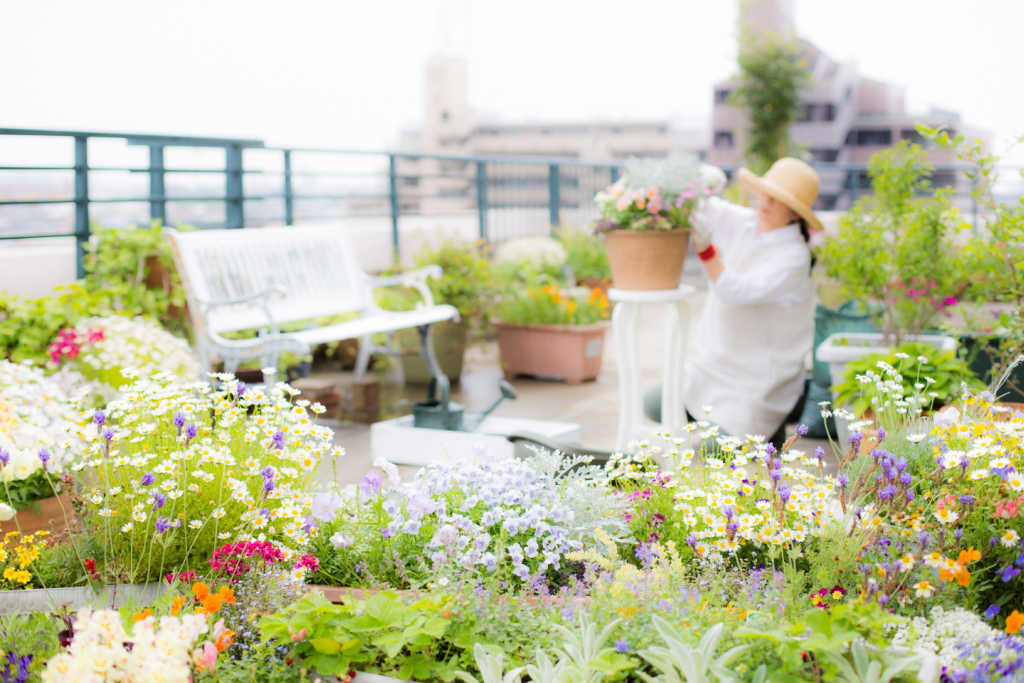There are many methods of terrace gardening. One of the most common is planting in wooden boxes. These boxes can be built into a design and allow you to create a walkway. Other methods of planting include building garden boards or frames. These are usually wooden frames with openings for vines to grow. Another technique is using arbours, which are grid-like wooden frames where vines can grow within them. These structures are great for creating walkways, as long as you have enough space. You can also use planters for separating different areas.
Fertilizers
Fertilizers for terrace gardening are necessary to keep your garden alive. There are a number of different types of soil available. The best soil is rich in organic matter. You can purchase the right type of soil at your local garden centre or nursery. You can also add organic compost to your soil for extra nutrients. Before you begin planting your vegetables, prepare a convenient bed. If you don’t have an outdoor bed, you can start by starting seedlings indoors in a cardboard box or seed trays.

Fertilizers for terrace gardening are available for most plants. Plants thrive in fertile soil. Healthy soil is the best base for growing healthy vegetables and flowers. Instead of adding fertilizer, you can use organic compost made from kitchen scraps, grass clippings, and eggs. Organic compost is a rich source of nutrients.
Pesticides
In terrace gardening, you can use pesticides to help control pests and diseases. However, it is important to choose organic-based pesticides. For instance, you should not use sprays that contain pyrethroids. These chemicals can cause serious side effects. Also, excessive use can be hazardous to the environment. The chemicals can damage desirable plants and beneficial organisms. Furthermore, overuse can also lead to a buildup of resistance.

Firstly, you must read the labels of all pesticides and pesticide products. Often, these labels have recommended limits. You should also avoid spraying chemicals in windy conditions or when there is significant rainfall. This is because the chemicals may move to other areas, which can lead to lawsuits and fines.
Trees
Planting trees on a terrace can provide a beautiful backdrop to the garden and also provide the plant with essential nutrients. Trees grow slowly and require some amount of water and sun to thrive. You can buy dwarf trees, semi-dwarf trees and standard trees to fit your needs. When selecting your trees, look for their disease and pest resistance, hardiness and yield. Many of these trees are available in kits that include everything you need to get started.

Mango trees are popular in India and contain vitamin C, minerals, fibre, and other nutrients. Mango trees can grow in a variety of soils but prefer a sandy loam with a pH of 6.5 or 7. Mango trees require regular fertilization and watering. Depending on the climate, mango trees can live for more than 25 years.
To grow herbs successfully, you need to make sure that they get the proper amount of sun and water. You can use containers that will give your herbs plenty of sunlight, or you can plant them in the ground. If you choose to plant them in the ground, you should use pots that allow excess water to drain. The best location for your herb garden is near your kitchen. Before planting your herbs, make sure you know the exact size and height of the plants you want to grow.
Herbs
Herbs should be planted in soil that is well-draining, with enough moisture for the roots to grow. If you are planting your herbs in a pot, you can add compost to the soil. This will prevent drainage issues and provide additional fertilizer.

Vegetables
To succeed at terrace gardening, you must plan your planting layout carefully. You must consider factors like drainage system, shade and sun exposure and soil type. You should also avoid using chemically treated soil, as it will kill beneficial bacteria and reduce the nutrients for the vegetables. Using natural soil that does not have any chemicals is a better option.

Containers: You can use a variety of containers for your terrace garden. You can use old plastic bottles, wooden crates, sandboxes, old wheelbarrows, and grow bags. Choose the right size container depending on the type of plant. Be sure to make sure that the container has two or more drainage holes. You may also want to add gravel to prevent clogging.
Trees grow vertically on vines
In terrace gardening, it’s possible to grow vines and trees vertically. A trellis is a framework with arches to support plants. These structures can provide shade and support a wide range of vines. You can use wood, stone, or metal to construct your trellis. You can also use a hose drip system to water your plants automatically.

If you have a small area for planting, you can plant in containers or use tower pots. You can choose from climbing plants like strawberries, sweet potatoes, spinach, or pole beans. You can also use support plants like bamboo or string to keep your plants up. To make this kind of planting space more interesting, you can add some compost or organic fertilizer to your soil.
Plants to grow on a terrace
On the terrace, you can grow a variety of different plants. For example, you can grow some lettuces in planters and keep the rest in containers. You can also grow various kinds of carrots and cucumbers. These plants do well in small containers and will grow very quickly. You can grow them in planters up to 5/6 inches deep.

In order to plant vegetables, you need to prepare the soil. Use compost, organic manure, and sand to create an ideal mix. You can then sow seedlings, and check on them regularly.

